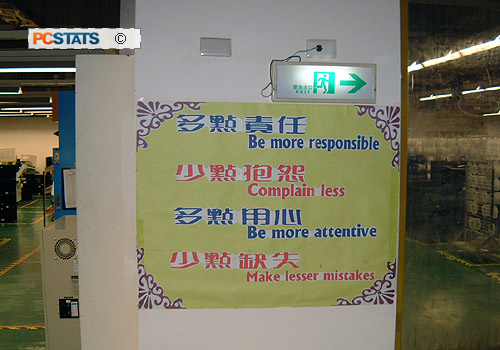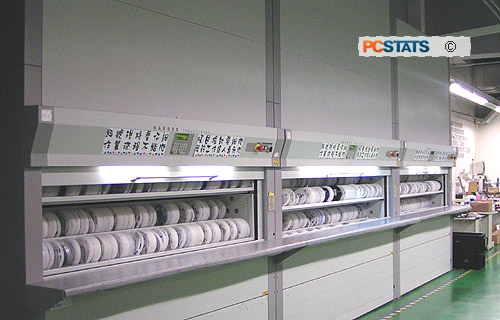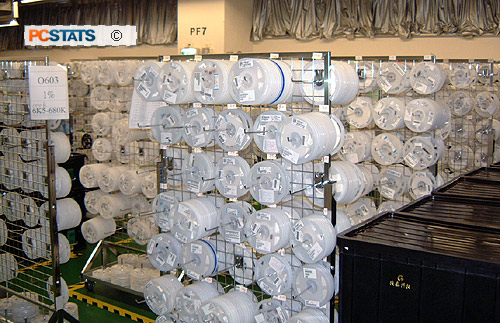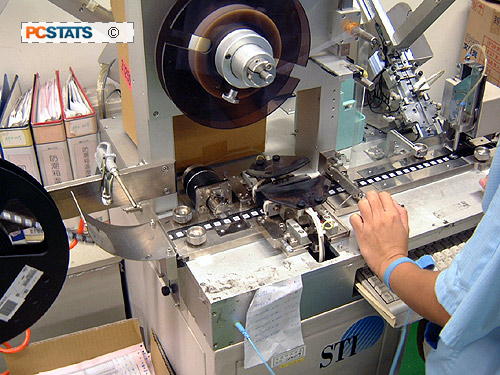Apart from the warehouse, the production line floors also
contained large storage areas, some with racks of component roll cartridges for the SMT
machines and some with sealed, moisture-proof cabinets for expensive core-logic components. We
also got to see a technician programming BIOS chips prior to their
installation.

Fine
motivational strategy... 'lesser' mistakes are acceptable
|

Automated BIOS chip and
IC storage cabinet. Chips are stored in
rolls to be used in SMT machines, and inventory is computer controlled.
|
Given the vast number of tiny electric parts that go into
a motherboard, we had envisioned buckets of resistors, capacitors, and IC's.
However, given the speed and automation of the factory machines, the time it
would take for a machine to pick out a 1mm square resistor from a pile, oriented
it correctly, and place it on the PCB would be too long and inefficient. Thus,
all components are stored on film reels, each contained it a little plastic
cup. The components are pre-oriented, and the high-speed automated machines can
handles these parts with machine-gun like speed.

More storage
for other SMT components |

Programming,
labeling, and testing
BIOS chips |

